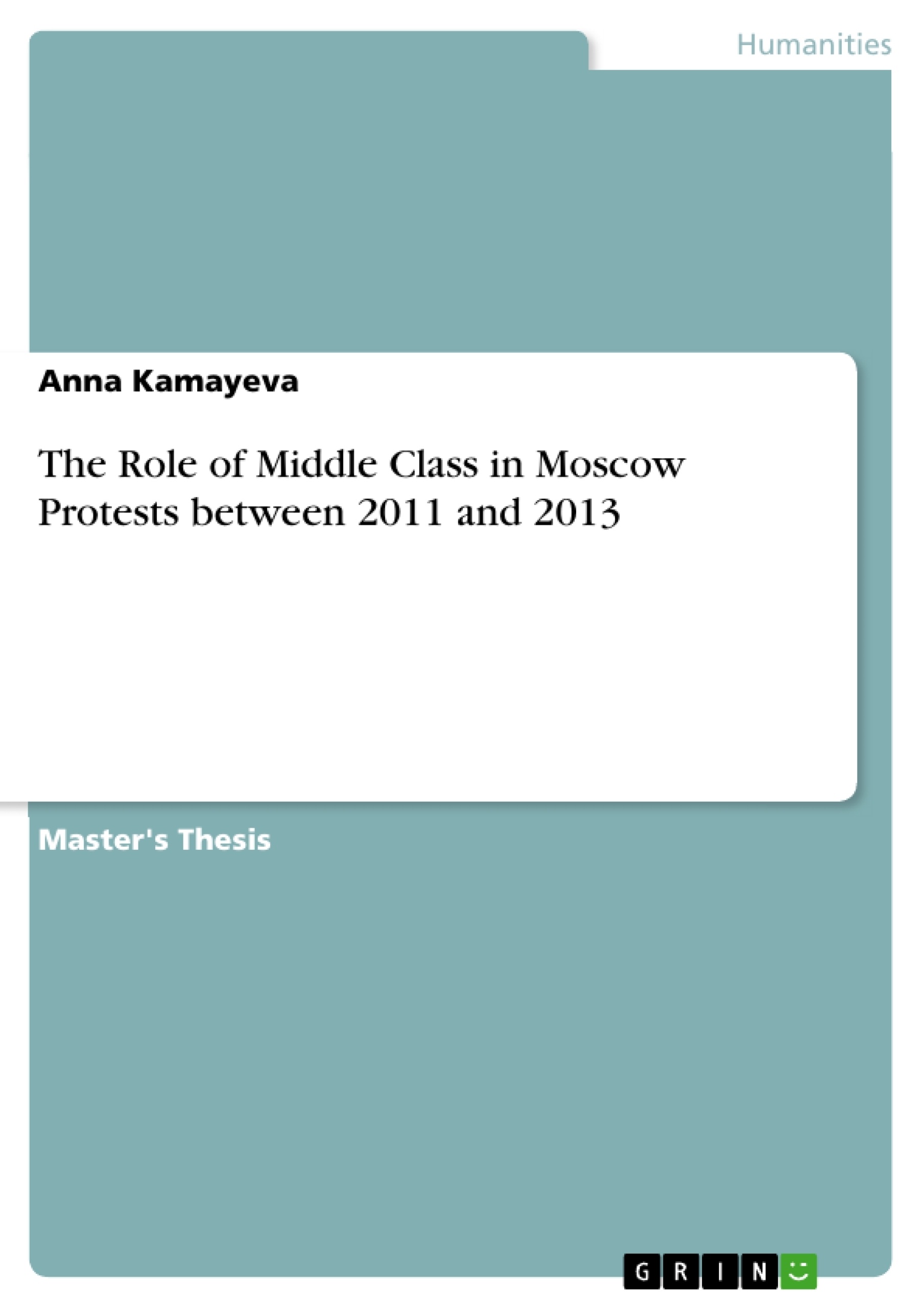This master thesis aims to analyze the relationship between mass movement in Moscow in the period from 2011 until 2013 and emergence of middle class in the State. The main objective of the paper is to prove that Financial Economic Crisis of 2008 - 2010 gave a sufficient impetus for the middle class in Russia to join the protest movement against unfair elections. In work the attempt to find an answer to the questions such as the reason why middle class joined protests in 2011, what processes preconditioned this mass decision and why the protests did not go further is made. The hypothesis is formulated as following: in the basis of middle class social discontent and their accession to the protests in 2011-2013 lies economic situation, which emerged in the country after financial and economic crisis, 2008-2010 rather than political engagement. In order to test this hypothesis the following analyses were made: the description of the protests themselves, description of middle class in Russia, analysis of polls and researches on this matter, investigation and short description of economic situation in the country within the years from 2008 till 2011, and interviews with political activists from non-systematic opposition were made.
The work clarifies the importance of living standards and Western democratic approach to the market and policy in Russia from the side of middle class and also opens up new questions which aim deeper investigation.
Inhaltsverzeichnis (Table of Contents)
- Introduction
- Research Problem
- Salience and Novelty
- Questions
- Objectives
- Hypothesis
- Research Design and Research Method
- Literature Review
- Theory and Method
- Qualitative Research Method
- Theoretical Framework
- Methodology
- Theoretical Approaches towards Social Movements Studies
- Middle Class Definition
- Research Analysis
- Description of Protests in Moscow, and the Reasons of the Failure
- The Reflection of Economic Crisis in the Mood of Russian Middle Class and Transformation into Political Crisis
- Citar trabajo
- Anna Kamayeva (Autor), 2015, The Role of Middle Class in Moscow Protests between 2011 and 2013, Múnich, GRIN Verlag, https://www.grin.com/document/288665



